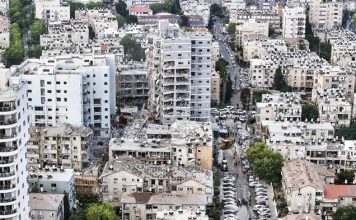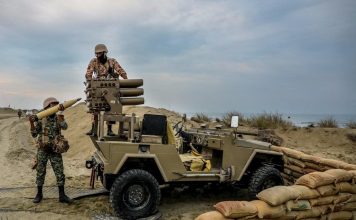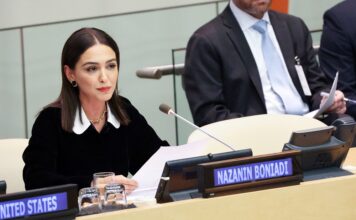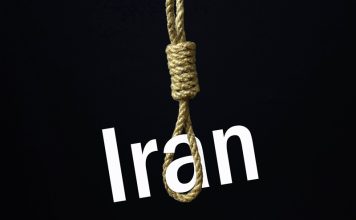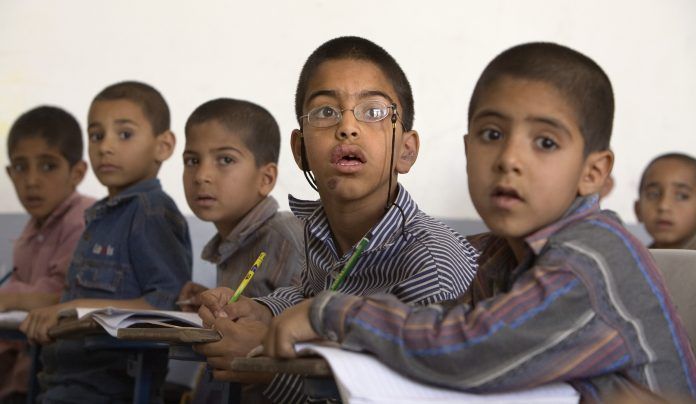
By Kayhan Life Staff
The Iranian government recently announced its plan to close some 1,000 libraries belonging to the Institute for the Development of Children and Young Adults, also known as the Center for the Intellectual Development of Child and Adolescent (CIDCA).
President Ebrahim Raisi’s cabinet said on Aug. 11 that the plan to close the CIDCA libraries was part of a broader set of cost-cutting measures.
The Ministry of Culture and Islamic Guidance reportedly proposed the measure to merge the CIDCA libraries with public libraries.
The government has submitted the plan to its Public Affairs and Human Resources Management Commission for review.
CIDCA libraries are part of the Iranian cultural heritage. They have played a crucial role in creating a reading culture in cities and rural regions.
In 1965, Empress Farah Pahlavi founded CIDCA, known to the Iranian public as “Kanoon” (meaning institute or center).
Lily Amir-Arjomand (born in 1938) was CIDCA’s director until 1979.
[aesop_image img=”https://kayhanlife.com/wp-content/uploads/2022/09/Kanoon.jpg” panorama=”off” credit=”The late Shah of Iran and Empress Farah Pahlavi visit the Center for the Intellectual Development of Child and Adolescent in 1965, Tehran, Iran. FILE PHOTO/KL./” align=”center” lightbox=”off” captionsrc=”custom” captionposition=”left” revealfx=”off” overlay_revealfx=”off”]
CIDCA’s principal mission was to build a network of permanent and traveling libraries across the country to promote a reading culture and literacy.
CIDCA libraries hold arguably the most extensive collection of books in the country and have made those and other reading material available to children and young adults across the country for the past five decades, especially before the 1979 Islamic Revolution.
CIDCA’s mobile libraries have played a crucial role in promoting a culture of reading and literacy in remote regions of the country.
The institute has also played a crucial role in recognizing, nurturing, and developing artistic talents among children and teenagers.
CIDCA’s first project was to create a library for children and adolescents.
The center opened its first library in Park Farah (current Park Laleh) in Tehran. Shortly after, CIDCA opened a second library in the storage room of a school in Tehran in Baghe-Shah (current Hor Square).
Speaking about the CIDCA’s role in promoting a reading culture and literacy in remote regions, Gholamreza Emami, a children’s literature writer and one of the CIDCA’s first publishing managers, said: “I remember a time when the only way to get the books to children in remote villages with no access roads was to carry them in boxes on the back of mules.”
“I have lived in Europe for 30 years and have seen many libraries worldwide, but I can say with utmost certainty that I have seen no library like the CIDCA libraries,” Mr. Emami noted. “For instance, there is one children’s library in Rome. CIDCA libraries are places for painting, music, filmmaking, writing, storytelling, and other artistic disciplines.”
The Ministry of Education has been managing CIDCA libraries. However, if the government’s Public Affairs and Human Resources Management Commission approves the proposal, the Education Ministry will lose control of CIDCA libraries.
As a result, some 1,000 libraries that have safeguarded a Pahlavi-era national treasure for five decades will be disbanded, and some 3,000 people will lose their jobs.
The government’s proposal submitted to the Public Affairs and Human Resources Management Commission argues that the measure is in line with the Ministry of Culture and Islamic Guidance’s plan to “create and streamline a much-needed program to fight illiteracy and promote a reading culture among children and young adults.”
[aesop_image img=”https://kayhanlife.com/wp-content/uploads/2022/01/2022-01-07T000000Z_1394109119_MT1NURPHO0007BZB60_RTRMADP_3_CONFLICTS-WAR-PEACE-IRAN-scaled.jpg” panorama=”off” credit=” REUTERS./ ” align=”center” lightbox=”off” captionsrc=”custom” caption=”An Iranian schoolboy sits in a vehicle as it drive past the Iranian Qiam short-range surface-to-surface ballistic missile (L), Solid-propelled road-mobile single-stage missile, Zolfaghar Basir (Top R), and Dezful medium-range ballistic missile in a military exhibition to mark the anniversary of an Iran missile attack on the U.S. Ain al-Assad airbase in Iraq in revenge for killing the former commander of the IRGC Quds Force, General Qasem Soleimani, at the Imam Khomeini Grand Mosque in downtown Tehran on January 7, 2022.” captionposition=”left” revealfx=”off” overlay_revealfx=”off”]
[aesop_image img=”https://kayhanlife.com/wp-content/uploads/2022/01/2022-01-07T000000Z_919020563_MT1NURPHO0007BYLV8_RTRMADP_3_CONFLICTS-WAR-PEACE-IRAN-scaled.jpg” panorama=”off” credit=” REUTERS./ ” align=”center” lightbox=”off” captionsrc=”custom” caption=”Iranian schoolboys sit under the Iranian Solid-propelled road-mobile single-stage missile, Zolfaghar Basir (R), and Dezful medium-range ballistic missile in a military exhibition to mark the anniversary of an Iran missile attack on the U.S. Ain al-Assad airbase in Iraq in revenge for killing the former commander of the IRGC Quds Force, Qasem Soleimani, at the Imam Khomeini Grand Mosque in downtown Tehran on January 7, 2022. ” captionposition=”left” revealfx=”off” overlay_revealfx=”off”]
It asserts that the Culture Ministry believes that “by absorbing CIDCA libraries’ book inventory, the public libraries will offer a broader, more extensive and richer collection of reading material to people.”
The Culture Ministry argues that besides being a “cost-cutting measure,” the plan will also “save money by using existing resources of the country’s public libraries, and increase the salaries of CIDCA employees in line with the Compensation Scheme for Library Services.”
Citing Clause 1 of Article 2 of the Establishment and Administration of Public Library Law, which highlights the purpose of libraries, the government has proposed a plan to merge CIDCA libraries with Public Libraries.
However, the government proposal conspicuously excludes many other libraries, including those in Astan-e Qods Razavi (in the holy city of Mashhad, capital of the southeastern province of Khorasan Razavi), Imamzadeh Masumeh (in the holy city of Qom, capital of the northern Qom Province,) (in the capital Tehran,) Ayatollah Marashi Najafi Library (in Qom,) Shah Abdol-Azim Shrine (in Ray, in the northern province of Tehran,) the Majlis (Iranian Parliament) Library (in Tehran,) the National Library of Iran (in Tehran), and others classified as “Vaghf” (charitable trust) libraries.
Iran’s 2020-21 Budget Earmarks Substantial Funds for Iran Religious Organizations
The proposal has sparked public outcry and drawn criticism from cultural and educational institutions for children and young adults.
“Transferring the control of the cultural nucleus of CIDCA to another body is nothing short of shutting down a prominent institution,” a statement by the Iranian Association of Writers for Children and Youth said. “It will cause the elimination of cultural activities specific to children and young adults. It will dissolve a unique institution which has been a source of national pride.”
“The consequences of such measures show the inability to safeguard the country’s most prestigious cultural institution,” the statement warned. “It exposes failure to protect an institution which we have inherited and embodies the accumulated achievements of thousands of people in various cultural disciplines in the last 50 years.”
The Iranian Association of Writers for Children and Youth statement noted that the Majlis and not the government must decide whether CIDCA libraries should become part of public libraries.
“The cabinet cannot transfer the management of cultural centers and CIDCA — which is a government institution operating under the auspices of the Ministry of Education — to a non-governmental body,” the statement argued. “Therefore, the government’s measure has no legal basis.”
Seyyed Ali Kashefi Khansari (1972-), an Iranian children’s literature writer and editor-in-chief of children’s magazine “Soroush Nojavan” has criticized the government’s proposed plan to merge CIDCA libraries with public libraries, warning that the measure would signal the demise of the CIDCA. He has argued that, contrary to the measure, separating the libraries from CIDCA will not cut costs but eliminate the principal revenue source for CIDCA.
People on social media have lambasted the government’s proposed plan. They believe the government is using the “cost-cutting” argument as an excuse to shut down CIDCA.
They note that while the government insists that CIDCA libraries must be merged with public libraries to save money, there are at least 43 religious institutions and state propaganda organizations with an average annual budget of $24 million, which do not contribute to the country’s economy.
[aesop_image img=”https://kayhanlife.com/wp-content/uploads/2020/09/2009-01-31T120000Z_989082186_GM1E51V1HHV01_RTRMADP_3_IRAN-scaled.jpg” panorama=”off” credit=” REUTERS./ ” align=”center” lightbox=”off” captionsrc=”custom” caption=”Two clerics look on as school girls wearing angel costumes wait to perform during the anniversary ceremony of Iran’s Islamic revolution at the Khomeini shrine in the Behesht Zahra cemetery, south of Tehran. FILE PHOTO/REUTERS./” captionposition=”left” revealfx=”off” overlay_revealfx=”off”]
“They have closed the Center for the Intellectual Development of Child and Adolescent because they reportedly incurred losses. Meanwhile, Al-Mustafa [University] and other similar institutions have massive annual budgets to produce clerics,” a social media user said.
Many on social media argue that the government’s proposal to dissolve CIDCA libraries is part of the government’s broader plan to replace all secular educational, artistic, and cultural institutions with religious centers.
OPINION: Iran Marks 33rd Anniversary of Khomeini’s Death With New Anthem


